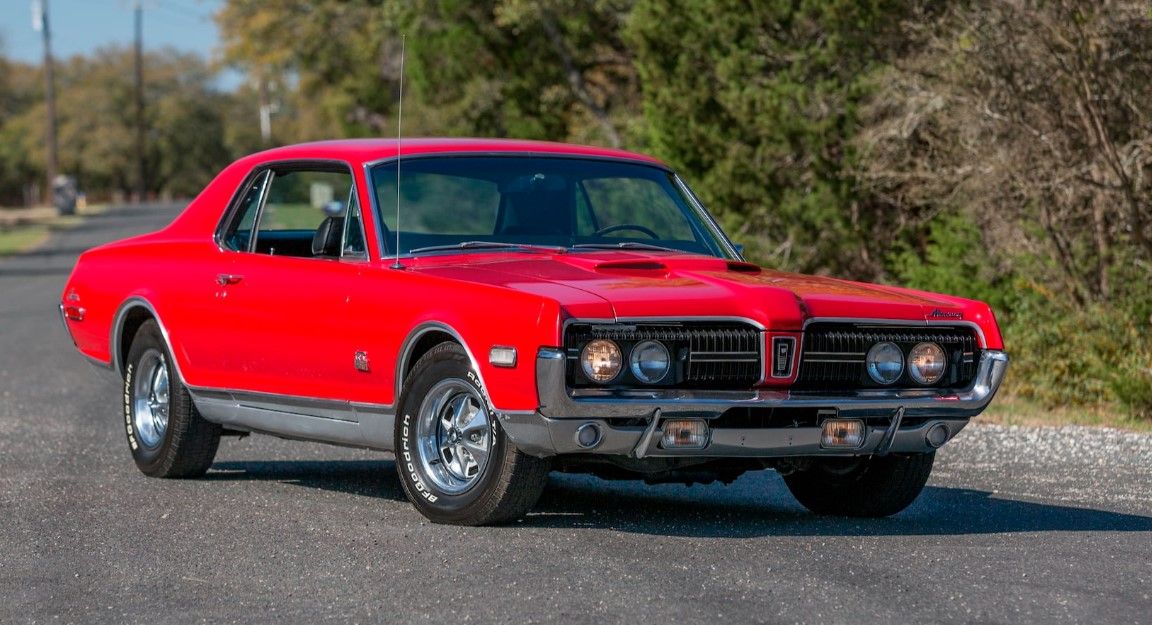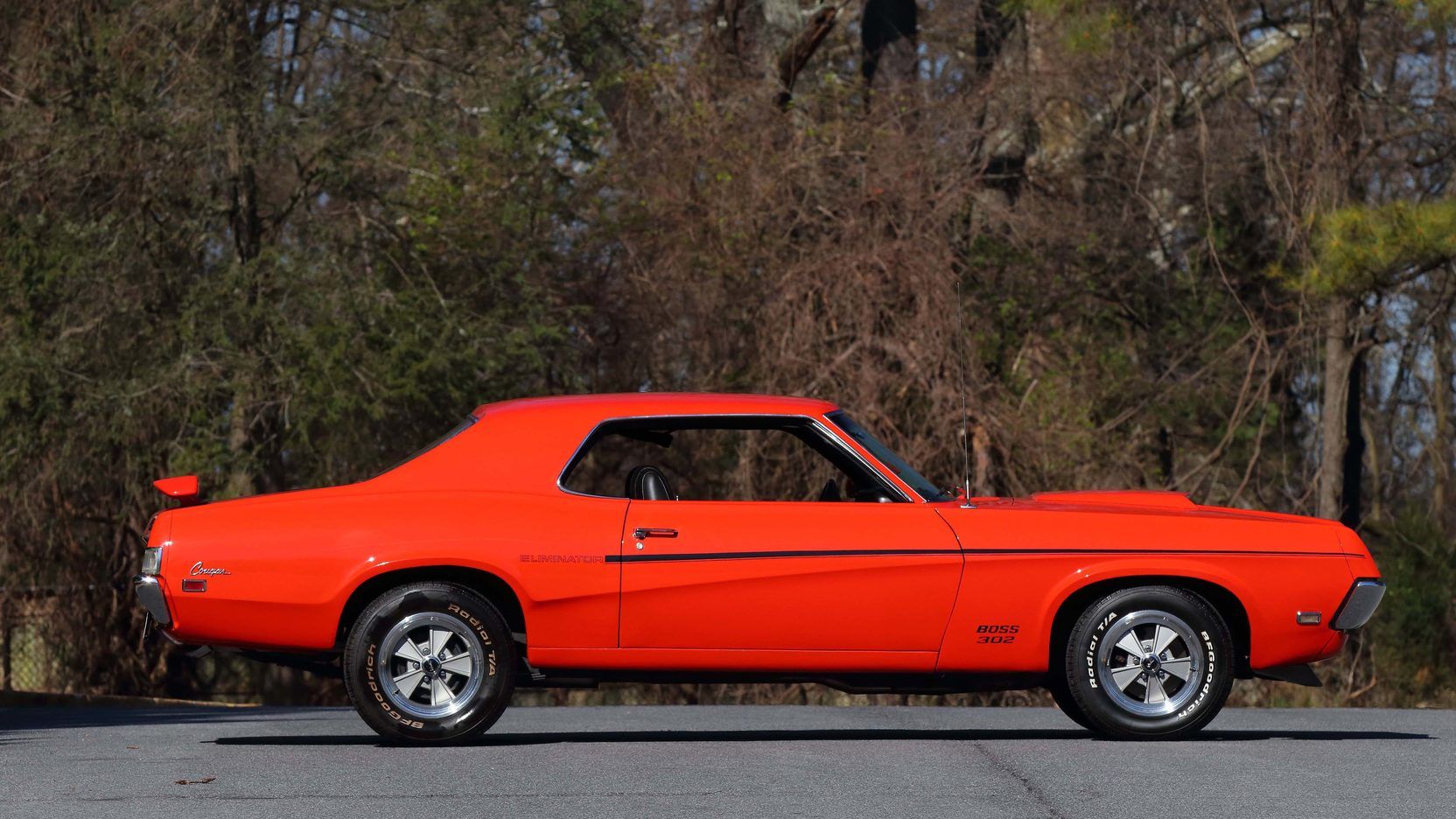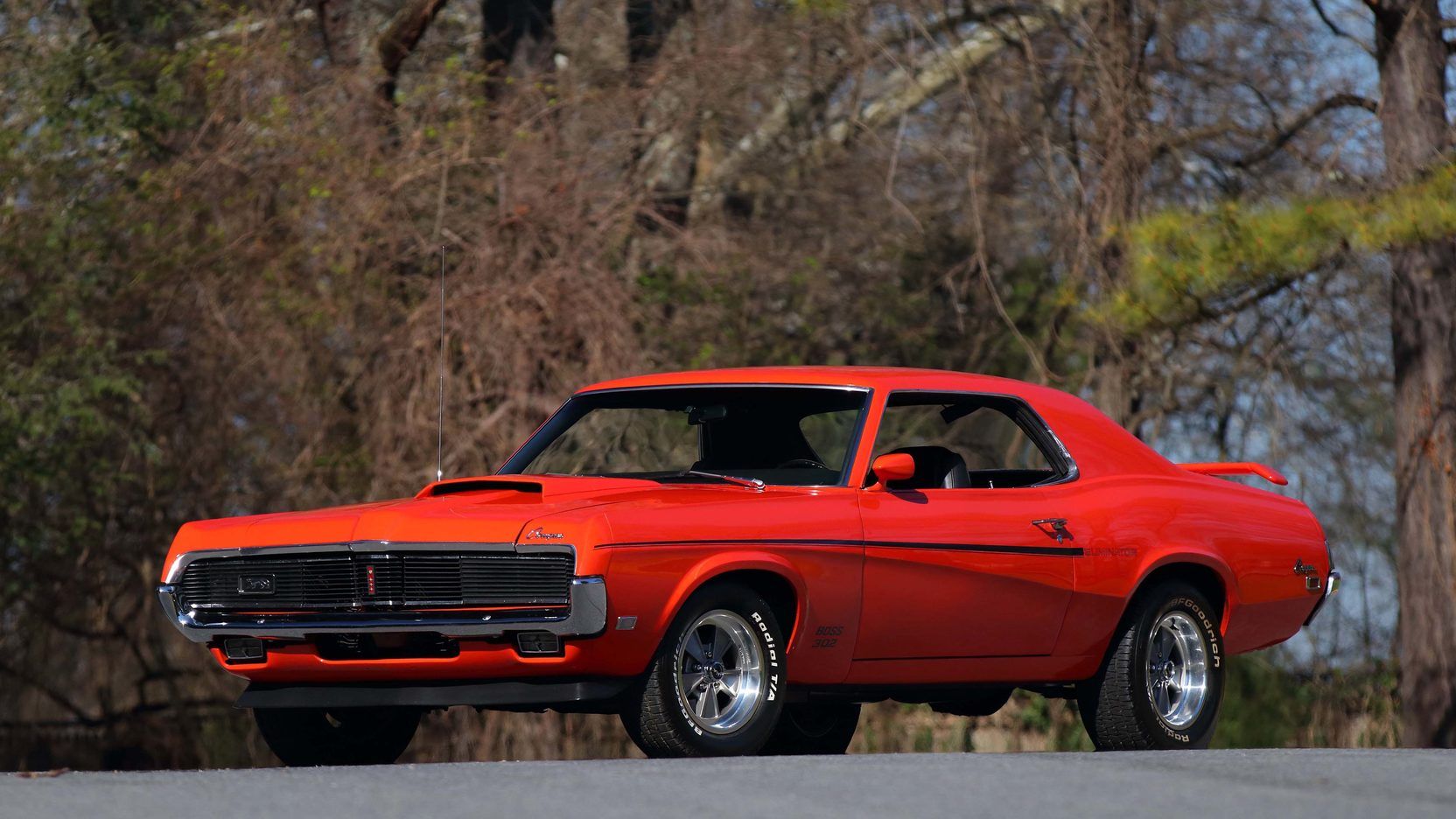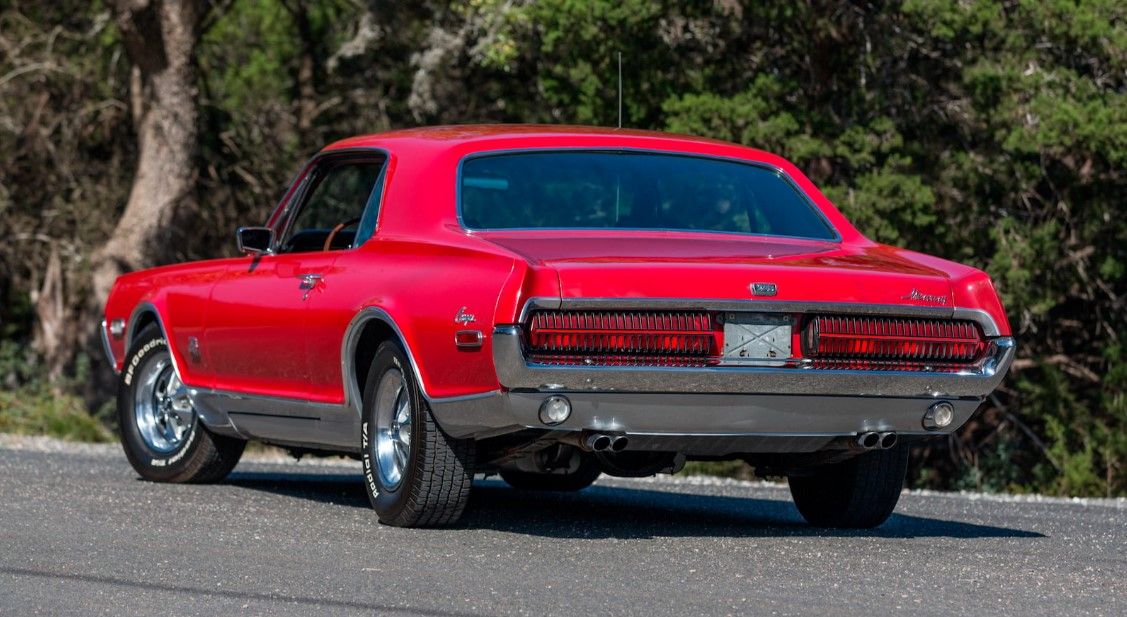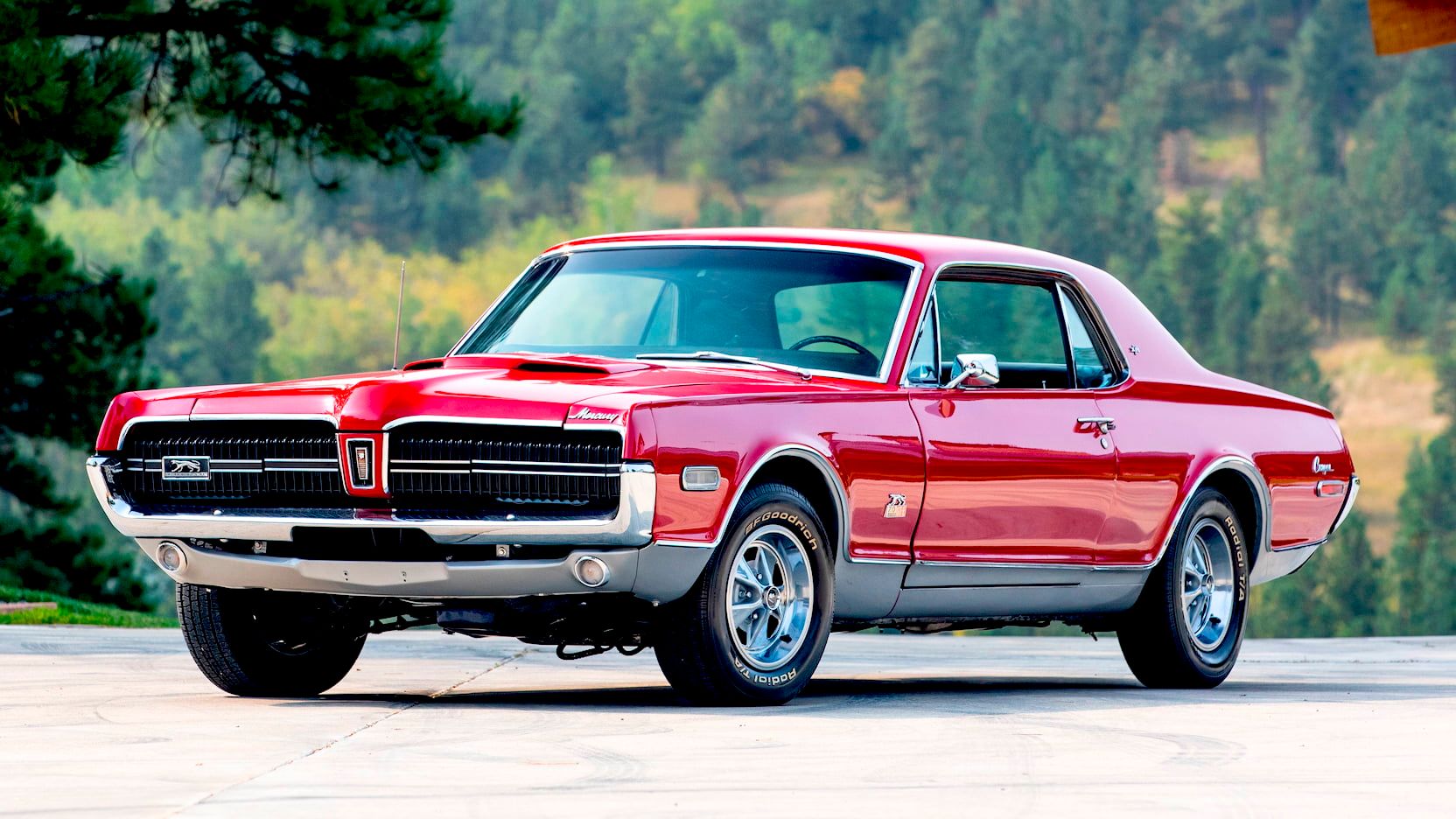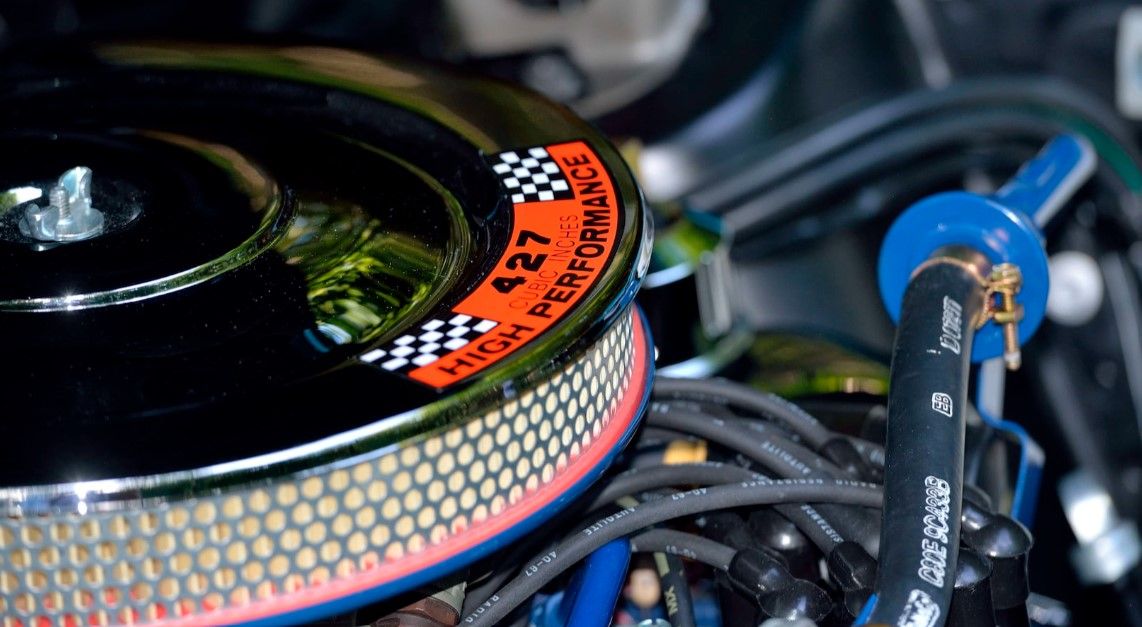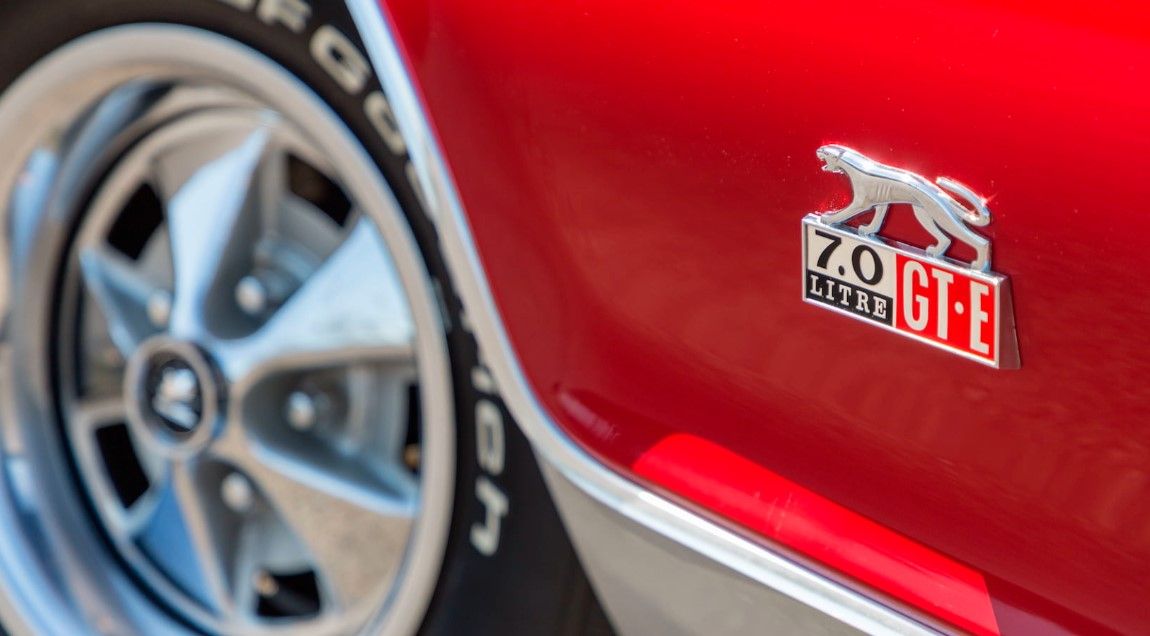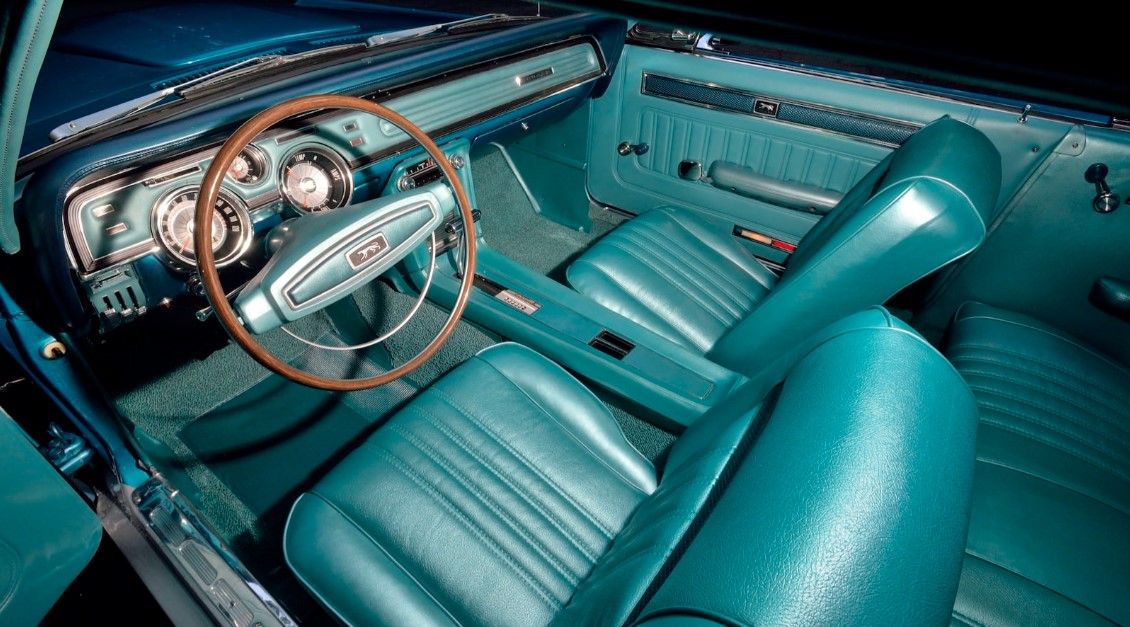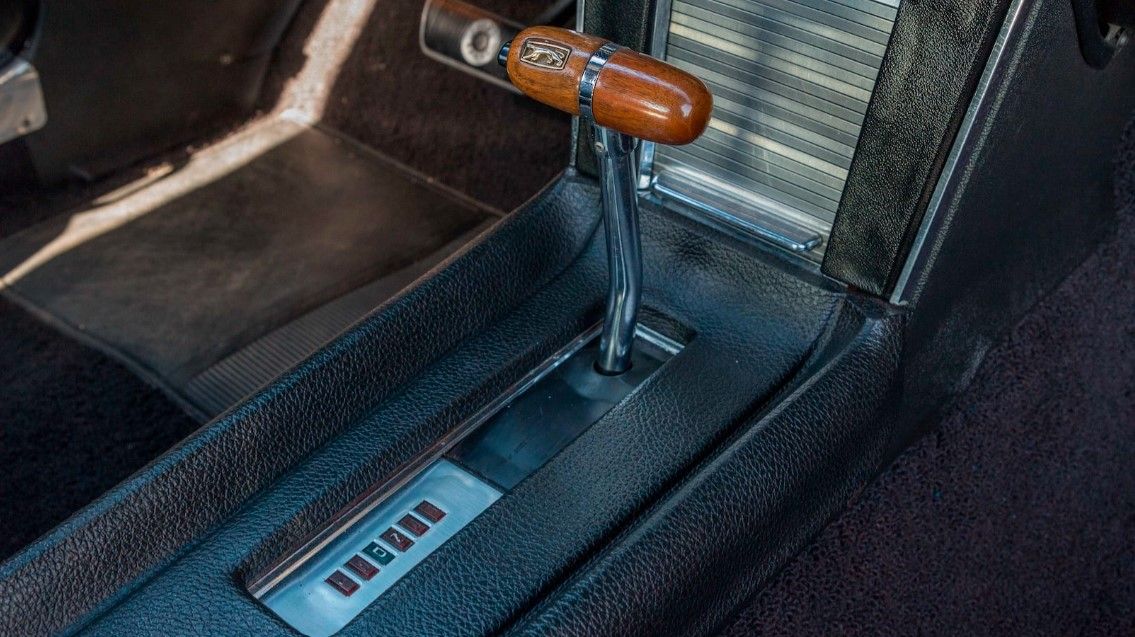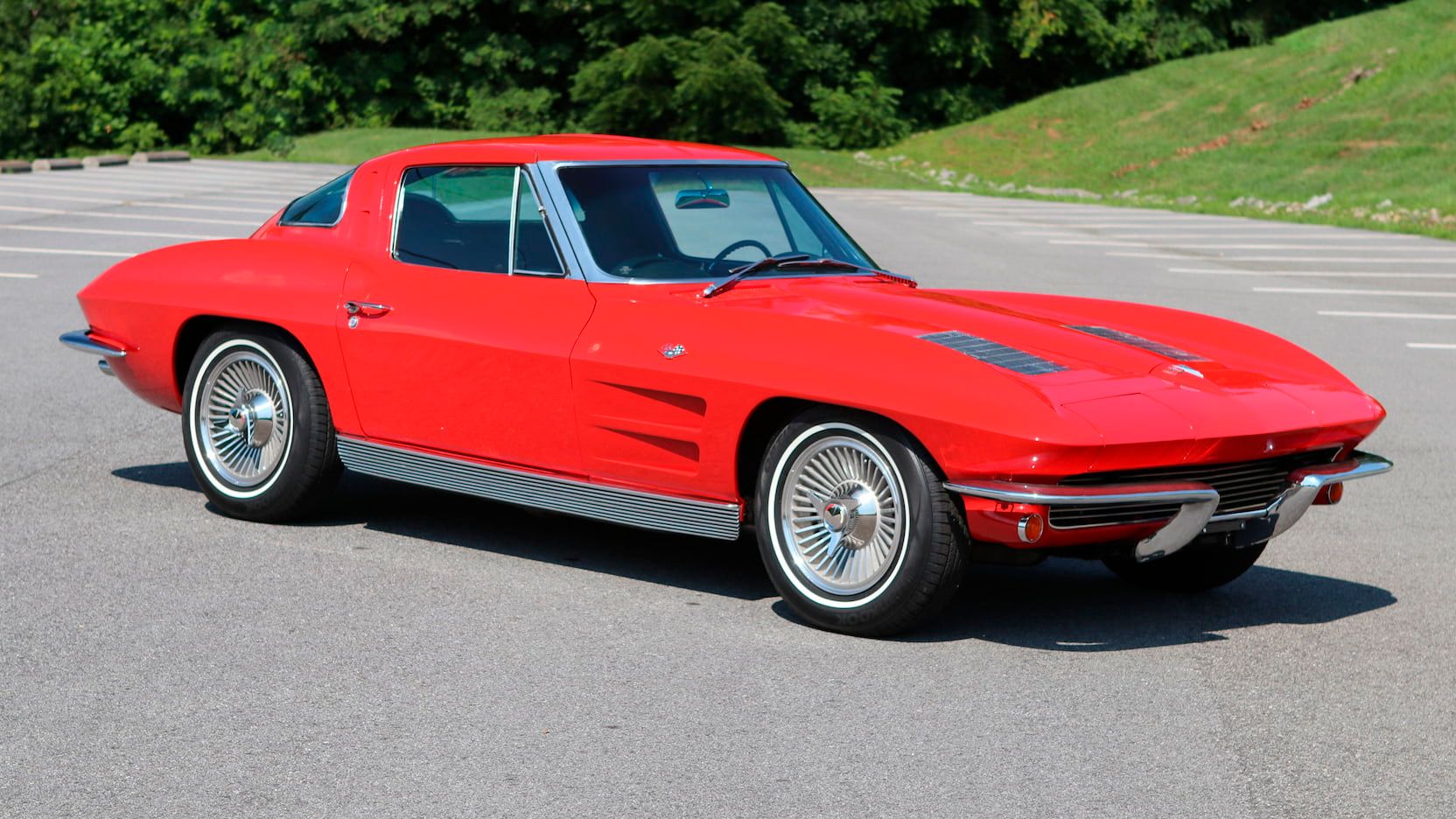When car people wax on poetically about the “Good Ole” days of the “Muscle Car Era”, the same names are frequently repeated – Camaro, Mustang, Charger, etc. But one legendary car from this era, gets unfairly forgotten, and it was one of the few to get an engine that’s more famous than the car itself. It’s the 1968 Mercury Cougar GT-E with the 428 V-8 engine.
In 1966, with Mercury noticing horsepower numbers climbing and consumers opting for more powerful cars, it decided to introduce more power to what was considered and upscale Mustang. This decision led to the banning of V-6 engines in the Cougar with the smallest engine available being the 289-cubic inch V-8. The power focus eventually led to homologation for NASCAR and years later, those in the market can get a piece of lesser-known muscle car history.
1968 Mercury Cougar GT-E
- Powerful Engine
- European Styling
- Upscale feel
- Model: Cougar GT-E
- Engine:: 427ci/428ci
- Power Output: 390/335 HP
- Torque: 44-/460 LB-FT
- Transmission: 3-speed automatic/3-speed manual/4-speed-automatic
- 427ci Engine
- Comfortable Ride
- Aggressive Styling
- Soft Handling
- Low Production Numbers
- Expensive
1968 Mercury Cougar GT-E Performance And Capability
The Cougar was derived from Ford’s Mustang, sharing a chassis with the pony car, and was initially intended to compete in the class, albeit as a more upscale option in the segment. Ford quickly realized the opportunity and targeted the vehicle towards older buyers who weren’t looking for a Mustang or Camaro. However, the automaker realized that it had to be exciting, which was why some of the most powerful engines available at the time were offered.
During its launch, the Mercury shared its engine lineup with the Mustang. The base engine was the 289 cubic inch V-8 that was offered with two or four-barrel carburetors that put out up to 225 horsepower and up to 288 pound feet of torque. Due to new federal emissions standards, the 289 was later replaced by the 302 cubic inch V-8 that produced 230 horsepower and 309-pound feet of torque. Cougar GT-E got the 390 horsepower 427 cubic-inch with a small number, 37 cars in all, getting the 428 Cobra Jet Ram Air that created a little less horsepower at 335 in 1968.
XR-7 model’s top performing engine option was the 390 cubic inch v8 that churned out 320 horsepower and 427-pound feet of torque. It was available with three transmissions, a three-speed automatic and both three and four-speed manuals. GT-Es equipped with the 428 Cobra Jet were only offered with the four-speed manual transmission. These cars were very quick for the time and on par with competitors in performance. Cougars with the 427 reached 60mph in just 5.8 seconds while covering the quarter mile in 14.1 seconds at 98mph. Gas mileage ranged from 11-14mpg.
Exterior Design
Mercury marketing team was adamant about making Cougar more “mature” than other performance cars of the era. They even went all in on the Cougar theme – who can forget the ads that featured real Cougars (yes that happened)? And although it was developed as a re-badged Mustang, Cougar got its own body design from the ground up while keeping the Mustang’s “long-hood, short-deck” silhouette but a 3.0-inch longer wheelbase.
Sticking with the trend of the late 1960s, the entire line was marketed as having “European” style and features. Cougar was the first Lincoln-Mercury vehicle that featured hidden headlights, with doors that were powered by vacuum actuators that were powered by the car’s engine.
It also got sequential turn signals that were borrowed from the Thunderbird to add a more upscale touch. Front fascia featured a split grill with vertically slatted chrome trim that was commonly referred to as the “Electric Shaver”. These vertical grill slats were completely blacked out on GT-E as well as the taillight grilles.
Other exterior features on GT-E included a brushed-aluminum horizontal trim bar with a black center strip, custom side-body trim, and quad exhaust pipe outlets in the rear. 428 powered cars got different hoods that featured functional hood scoops. Both 427 and 428 cars got the “7.0 Litre GT-E” badging.
A special Dan Gurney XR7-G appearance package was introduced this year that included modifications such as a unique hood scoop, hood pins, fog lamps, tailpipes and special wheels. This package was offered with any Cougar engine. Unlike the Mustang it was based on, Cougar was only offered in a Hardtop in 1968.
Model | 1968 Mercury Cougar |
Wheelbase | 111 inches |
Length | 190.3 inches |
Width | 71.2 inches |
Height | 51.8 inches |
Interior Quality
The European influence and styling extended to the inside of the Cougar as well. Even base cars had interiors that were much nicer than the Mustang they were based on. Driving was extremely quiet in comparison to the Mustang thanks to substantially more sound insulation that isolated drivers from road noise. Seats are comfortable in supportive with enough space to fit four adults comfortably.
Those who opted for the XR-7 got an even nicer interior. For $185, drivers were treated to a faux wood-trimmed dashboard, full instrumentation with black-face gauges, toggle switches and an overhead console. Cars equipped with the automatic transmission got the T-handle console shifter.
Every option Mercury offered at the time was available on the Cougar except power windows. The Mercury got one of the earliest versions of what we know as “comfort entry/exit” with the “Tilt-Away” steering wheel. This power-operated steering column moved up and out of the way once the driver's door was opened, the transmission was in park and the ignition was off. There was an electronically operated sunroof option available but strangely enough, it was not a very popular option.
Price and Availability
Make no mistake about it, the 1968 Mercury Cougar GT-E is a rare car. Production numbers were extremely limited as the Ford higher-ups weren’t really sure how the car would perform on the market. Out of a total 113,720 vehicles produced that year, less than 400 GT-Es were produced with only 357 getting the 427 V8 while only 37 received the 428 Cobra Jet. Not surprisingly, this short production run nearly 60 years ago have sent the survivors into the six figures today.
Shoppers who aren’t looking for the performance model can still get decent examples without putting a huge dent in their wallets. Looking at the market for the Mercury Cougar, Base models can be found for just over $14,000 into the lower $30,000 range. However, those looking for a fully spec’d out XR-7 can expect to pay $50,000 or more with the ultra-rare GT-E cars going for nearly $150,000.
Safety
1968 was a tough year for automakers as several government mandates forced compliance through exterior design or engine performance. Cougar was no stranger to this as the car saw compliance related revisions such as outboard shoulder belts and side marker lights.
Main Competition
Mercury made no secret of the GT-E’s target demographic. The Cougar wasn’t going after Camaro, Mustang or Challenger buyers. The car was touted as more of a Grand Tourer than the muscle car that it is remembered as today. Both luxurious and performance in one package aimed at the more sophisticated, mature buyer. So naturally, its main competition was its main Detroit competition’s halo car. The Chevrolet Corvette.
Although it shared powertrains and other components with Camaro, Corvette was not the same. It, like the Cougar GT-Es and XR-7s were targeted toward older buyers who had outgrown the muscle and pony car segments. Performance was comparable in top trim as the Corvette sported a similarly powered 435hp 427 V8.
Corvette handled better due to its size and weight advantages, but the Cougar was a more comfortable and some would argue a more practical car. But as both cars continue to age and current owners being less willing to part with their cars, prices will continue to skyrocket on both highest-performing models.
FAQ
Q: What is a 68 Mercury Cougar worth?
Base cars in good condition can be had for as little as $14,000. GT-Es can garner more than $100,000.
Q: How much horsepower does a 1968 Mercury Cougar GT-E have?
427ci powered cars put out 390 horsepower while 428ci Cobra Jet cars make 335 horspower.
Q: What is the rarest Mercury Cougar?
The 1968 Mercury Couger GT-E is the rarest with less than 400 units being produced that year.
Q: How many 68 Cougar GTE were made?
357 1968 Cougar GT-Es were produced with the 427ci engine while only 37 were produced with the 428ci Cobra Jet.
Q: Is a 1968 Cougar a muscle car?
At the time it wasn't considered a muscle car, but as years have past it is now considered a muscle car.

